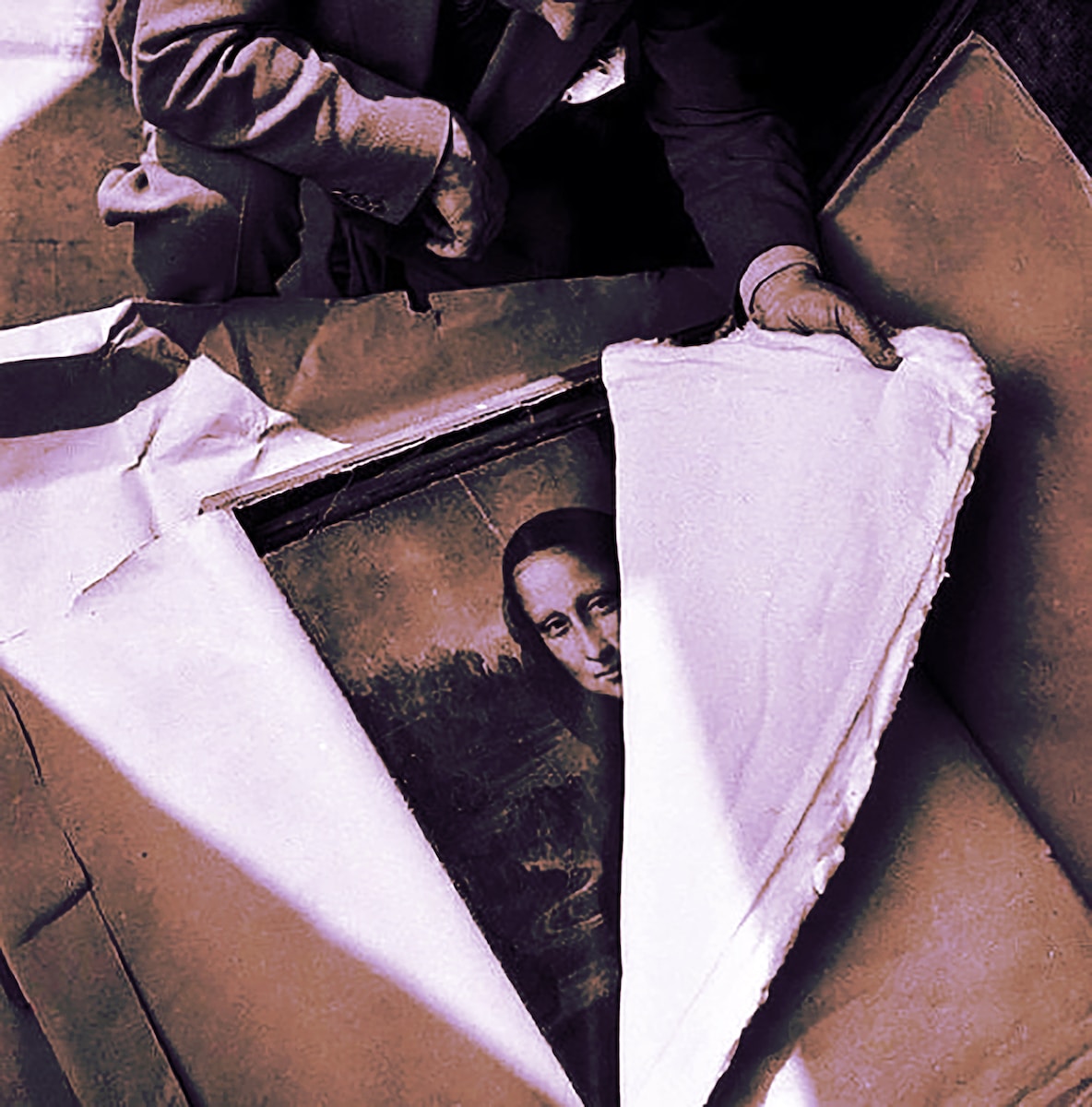On 21st August 1911, it was a Monday morning in the French capital, Paris. It was quite bustling. People were going to work in their offices when suddenly, three men came out of the Louvre museum. The three had spent the previous night in the museum. And now, they were carrying an important property of the Louvre Museum.
that was hidden in a blanket while they tried to escape. They went to a nearby railway station caught the train at 8.45 in the morning and disappeared. The whole world was unaware of the fact that they had stolen a painting. Not an insignificant painting. The world’s most famous painting. The Mona Lisa.
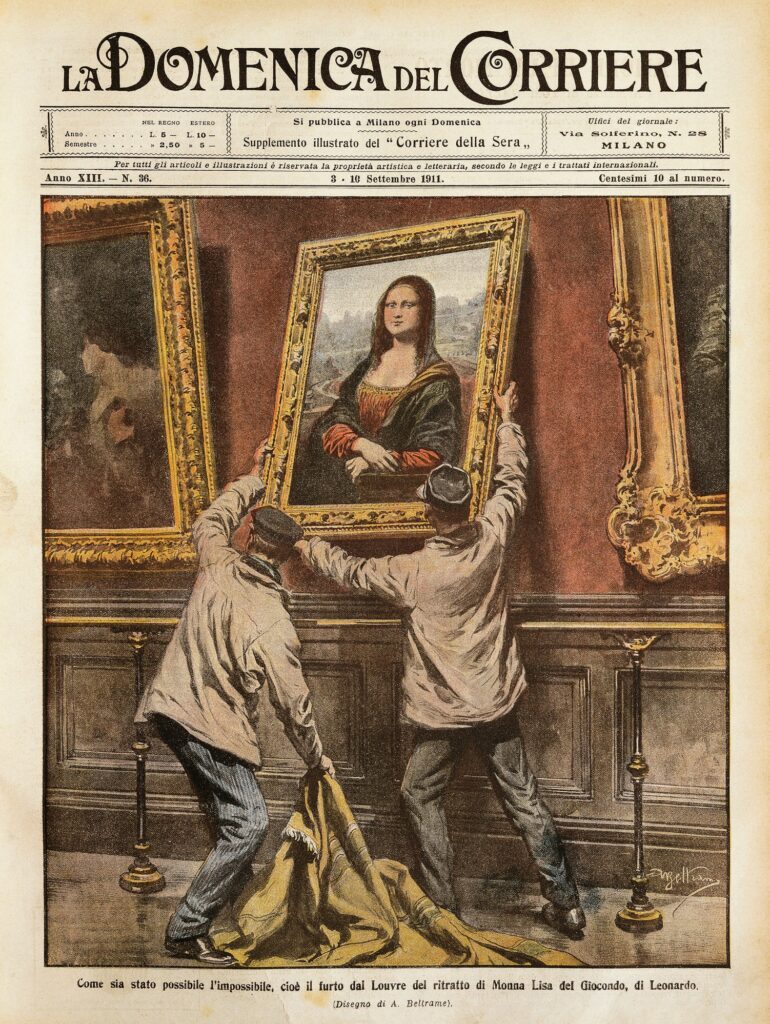
Today, the value of this painting is close to $1 billion. What is the reason behind this? What are the secrets hidden in the Mona Lisa? Why is this the most famous painting in the world? Let’s understand the mystery of the Mona Lisa.
Mona Lisa was painted in 1503 by an Italian artist Leonardo da Vinci. And this man was so amazing, that you won’t even believe it. Not only was he a painter, but also an engineer, scientist, sculptor, architect, and theorist. He had knowledge of so many subjects be it painting, cartography, astronomy, anatomy, botany, hydrology, geology, optics, or even palaeontology.
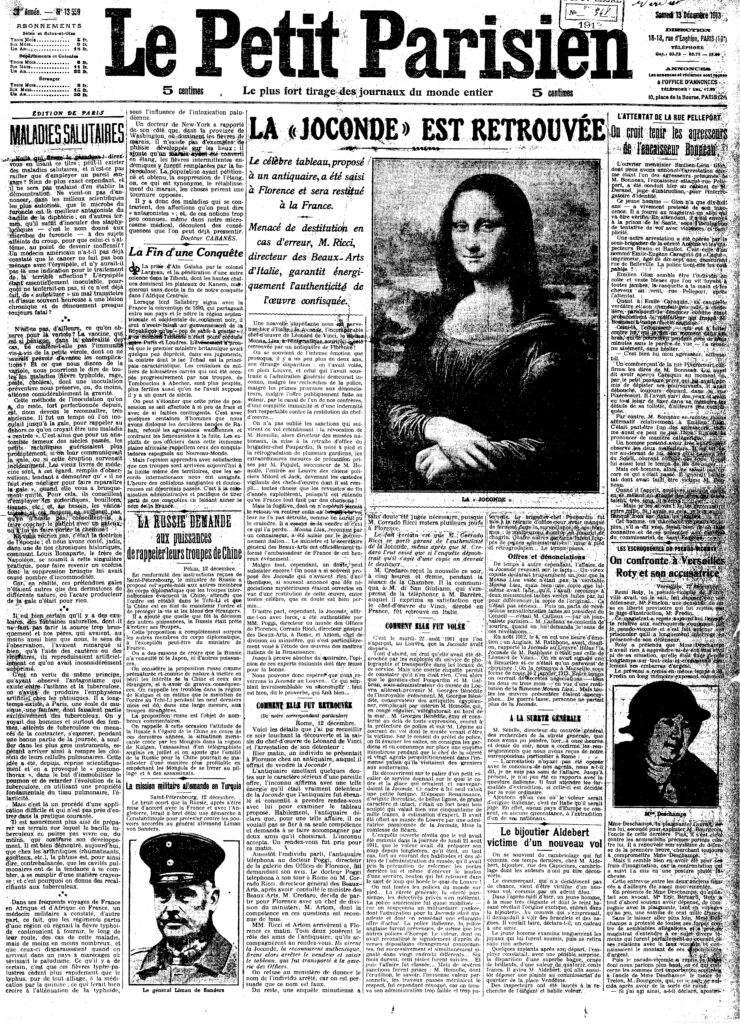
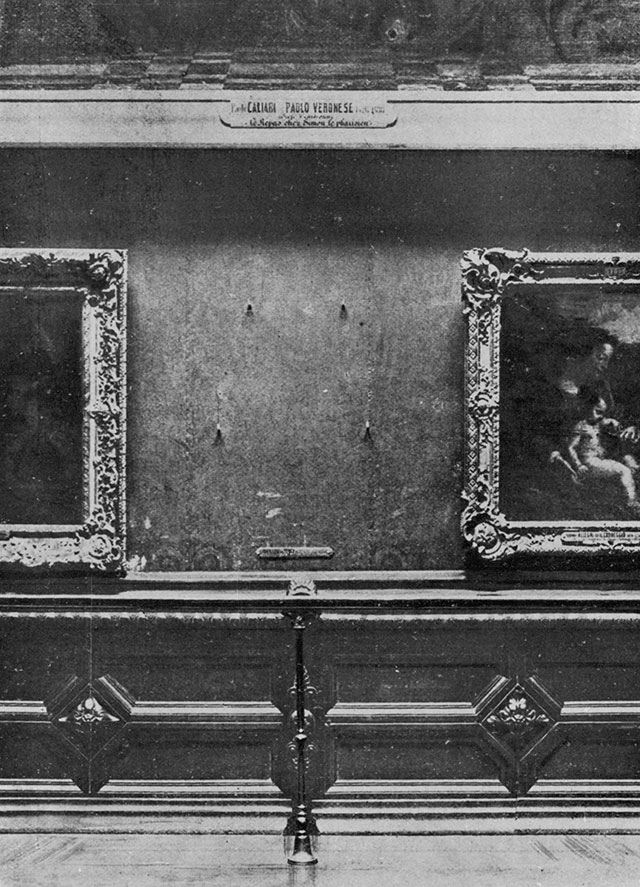
So, without talking about him too much, let’s get to Mona Lisa. Which was his most famous painting. But who was this person in the painting? People have always been curious about the identity of the woman in the painting. The first revelation about this was made by an Italian artist named Giorgio Vasari, who wrote the autobiography of Leonardo da Vinci in 1550.
According to Vasari, this woman was Lisa Gherardini. She was married to a silk trader who lived in Florence, Francesco Giocondo. He believed that Francesco had commissioned this painting of his wife and that’s the origin of the names of this painting. The first name that we all know, Mona Lisa, derived from Madonna Lisa.
Traditionally, in Italian, the word Madonna was used to mean Madam. So, Madonna Lisa meant Madam Lisa. The word Madonna was later shortened to Monna. Monna with a double N. When this was written in English an N was dropped and Monna became Mona. So Mona Lisa means Madam Lisa or Lady Lisa. And then comes Mona Lisa’s other name which is La Gioconda.
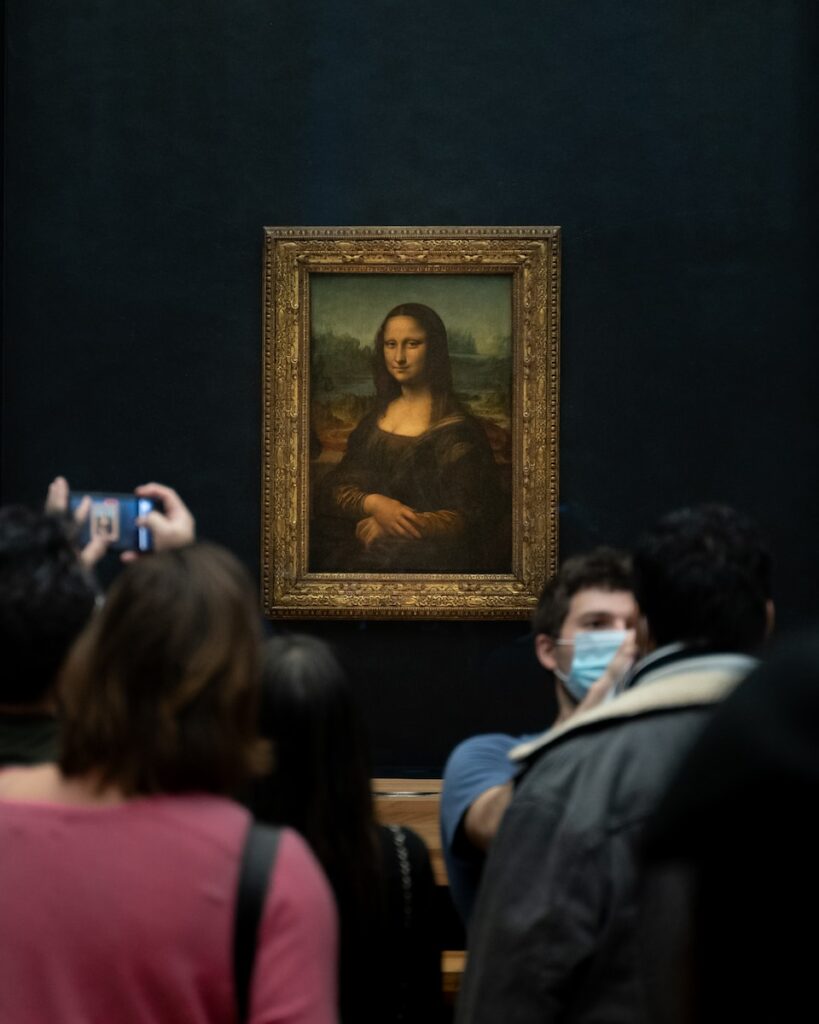
After her marriage, Lisa Gherardini became Lisa Giocondo. Interestingly, in Italian, Giocondo means light-hearted or cheerful. Meaning, bright and joyful. And today, Mona Lisa is very famous for her smile. So that’s where it got its name, La Giocondo. In French, the word Giocondo is written with a J, like this, Joconde.
Read More:
- African Digital Art Prints Free Download | African Art images
- Boho Chic Wallpapers | Best Bohemian Wallpaper Ideas
- Boho Chic Wallpapers Free Download
- How to Earn Money by Doing Nothing
- How to Earn Money by Selling Digital Art on Etsy
So that’s why when you go to the Louvre Museum in Paris and see the painting of Mona Lisa, in French, it would be identified as La Joconde. Now, the interesting thing is that in 1550, despite this revelation, people were not ready to believe that Vasari’s narrative was correct. Many theories started to emerge about this woman being someone else.
Some people said that she was Leonardo da Vinci’s mother. Some said that this was a painting of a queen from the Italian aristocracy.
The most interesting theory was that in this painting, da Vinci painted himself. This painting is not of a woman. but in fact a self-portrait of Da Vinci. Where he imagined how he would have looked had he been a woman.
This theory was promoted by artist Lilian Schwartz in an article in 1987. She used digital tools to try to show similarities between Leonardo Da Vinci’s face and Mona Lisa’s image. With this logic, any two faces can be seen as similar by placing them on top of each other. But today, we can say with a lot of certainty that the woman painted here is indeed Lisa Giocondo.
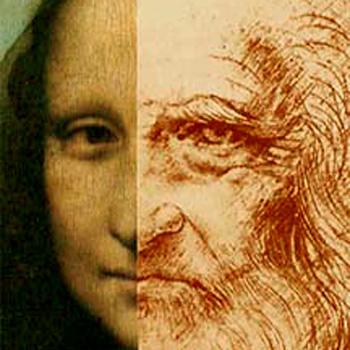
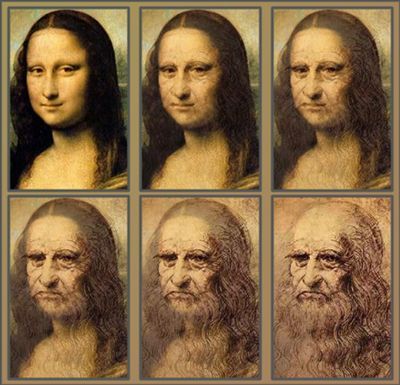
A professor living in Florence researched this for 25 years and found the archives and in 2004, he discovered clear evidence to prove this fact. He also found that the da Vinci family had a close relationship with Francesco Giocondo’s family. He also found a record that Lisa’s marriage was registered on 5th March 1495 when Lisa was 16 years old and Francesco was around 30 years old.
Read More:
- African Digital Art Prints Free Download | African Art images
- Boho Chic Wallpapers | Best Bohemian Wallpaper Ideas
- Boho Chic Wallpapers Free Download
- How to Earn Money by Doing Nothing
- How to Earn Money by Selling Digital Art on Etsy
- How to Earn Money by Selling Digital Art
- When first cricket match was played
- Largest spider ever discovered
- The largest octopus on earth ever found
- How did Leonardo da Vinci become famous?
He found that Leonardo da Vinci’s father and Lisa’s husband knew each other very well. And it’s possible that this painting was commissioned not by Lisa’s husband, but by Leonardo’s father. Pallanti says that when the Mona Lisa was painted, Lisa was 24 years old. And that there might have been two reasons for painting this.
The first reason is that in 1503, Francesco and Lisa bought their home, and the second reason is that in December 1502, their second son was born. The second reason seems more probable because three years before this, in 1499, Lisa lost her daughter. If you look at this painting closely, you will see a veil over Lisa’s hair.
Many people call it a mourning veil. It is a veil that is worn when someone in the family has passed away. Now, one question arises here if Da Vinci was Italian, Mona Lisa was Italian, then why is this painting in France today? Well, the thing about this is that in the year 1516, the king of France, King Francis I, invited Leonardo da Vinci to live in France.
And so, da Vinci moved from Italy to France. And took with him the Mona Lisa. Historical records aren’t clear about this, but it’s believed that da Vinci hadn’t completed the painting yet. 15 years after starting the painting, he was still working on this painting, trying to modify it and make it better.
Meanwhile, in the year 1519, Leonardo da Vinci passed away during his stay in the French palace. The king kept this painting as a part of his Royal Collection. About 150 years later, in 1797, when the French Revolution happened, this painting was taken out of the palace and handed over to the Louvre Museum.
The interesting thing is that this is the reason why the Mona Lisa was stolen in 1911. I had talked about this at the beginning of the video. The mastermind of this theft was Vincenzo Peruggia.
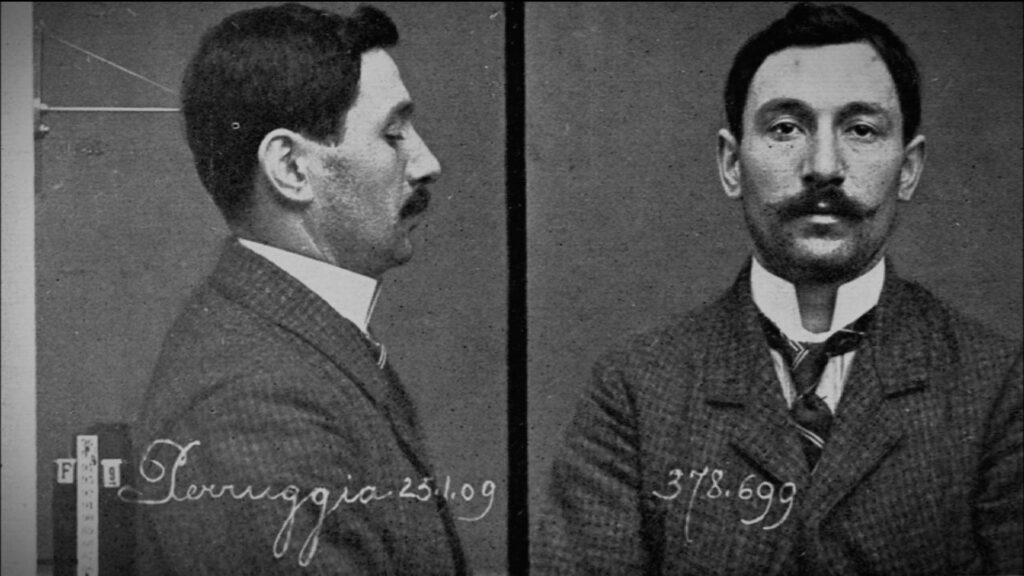
He stole this painting together with his two friends. He was an Italian Nationalist. He believed that this painting belonged to Italy. Not in France. And so after stealing it, they took it to Italy. Stealing such a famous painting was a risky job especially when the value of the painting was in millions of dollars. So, obviously, Vincenzo wouldn’t have felt safe after this theft.
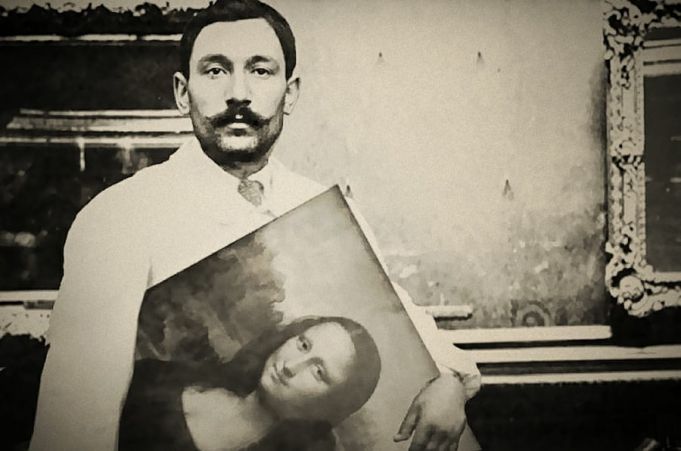
But before that, let’s know the speciality of this painting. Why is it so special? First of all, the Mona Lisa was not painted on paper, canvas or cloth. Instead, it was painted on poplar wood. In those days, it was the favourite wood of Italian painters. Secondly, this painting isn’t large.
Look at the photo.

This is where it hangs in the museum. You can see its size in comparison to the people. This painting is only 77 cm by 53 cm. But still, it is considered so special because, in its time, in Italy, this was the first painting which focused so closely on the person. This is a half-length portrait. These types of shots are very common in photography today.
But no one used to make such paintings in those days. If you look at the overall colour grading of this painting, you will see a lot of brown and yellow shades. It looks like a very dull painting. It is so yellowish that at one point, a professor declared Lisa a cholesterol patient. But there are two reasons behind this. First, a varnish layer has been applied to this painting so that moisture does not affect the painting badly.
So it’s necessary to protect it from humidity and moisture. And secondly, over time, there was bleaching. Originally, when this was painted, it used to be more bright and colourful. Some people tried to recreate this painting to see how it would have looked originally. Da Vinci used a very special painting style in this painting, known as Sfumato.
The technique of blending. The background you see in this painting is a landscape. It is the Arno Valley in Italy. There are no clear boundaries or outlines between the background and the Mona Lisa. In some places, Mona Lisa’s hair is blended with the landscape. Blurring the outlines and blending the colours is the technique of Sfumato.
This is the secret behind Mona Lisa’s mysterious smile. Look at Mona Lisa’s smile carefully. The more you look at this smile, the more serious this face will look. But now look into Mona Lisa’s eyes. Suddenly, you will see Lisa smiling more. If you look at any part of the painting, be it the background, Mona Lisa’s forehead or her eyes, you will see the effect.
Lisa’s face starts smiling more when you don’t focus on the smile. To perfect this smile, da Vinci spent the most time. He spent many nights in a hospital in Florence, where he used to go and remove the skin of dead bodies. He wanted to study the facial muscles and nerves and how they work together to create a smile.
He wrote in his book that “the muscles which move the lips are more numerous in man than in any other animal.” It was very difficult for him to dissect the muscles of the lips because the muscles here are tiny and numerous. During this experiment, da Vinci studied horses as well. He compared human expressions to that of horses.
In the notes, he wrote, “Notice whether the muscle that raises the nostrils of the horse is the same as that which lies here in man.” Hardly, throughout history, any other artist has dissected the faces of a horse and a human and done these experiments. His obsession with Mona Lisa’s smile didn’t end there.
After this, he did research on optics as well. He found that the light rays don’t merge together into a single point on our eyes, rather they spread out over the entire retina. The centre of the retina, known as the Fovea, helps us see the finest details. On the other hand, the rest of the retina picks up shadows and black-and-white imagery more.
Using this knowledge, he focused on the shadows in such a way that even when you see the Mona Lisa in your peripheral vision, as in, if you are looking this way and the Mona Lisa is on the other side, even if you are not paying attention to Mona Lisa, the effect of her smile is still there. When you look at her smile closely, you will see that its central line is a flat line, which is why when you look at her smile, it looks like she is not smiling at all.
But on the other hand, the shadows created using the Sfumato technique, have such an effect that when you look elsewhere, your peripheral vision sees that smile and its shadows are reflected. And then you feel that Lisa is smiling. How would it feel if I told you that the Mona Lisa is not one painting, but rather two paintings?
This is not a conspiracy theory, it’s the truth. Mona Lisa’s painting, as we know, a similar painting was created at the same time. The story of this second Mona Lisa began in the year 1504 when another legendary artist named Raphael made a rough sketch using pen and ink.
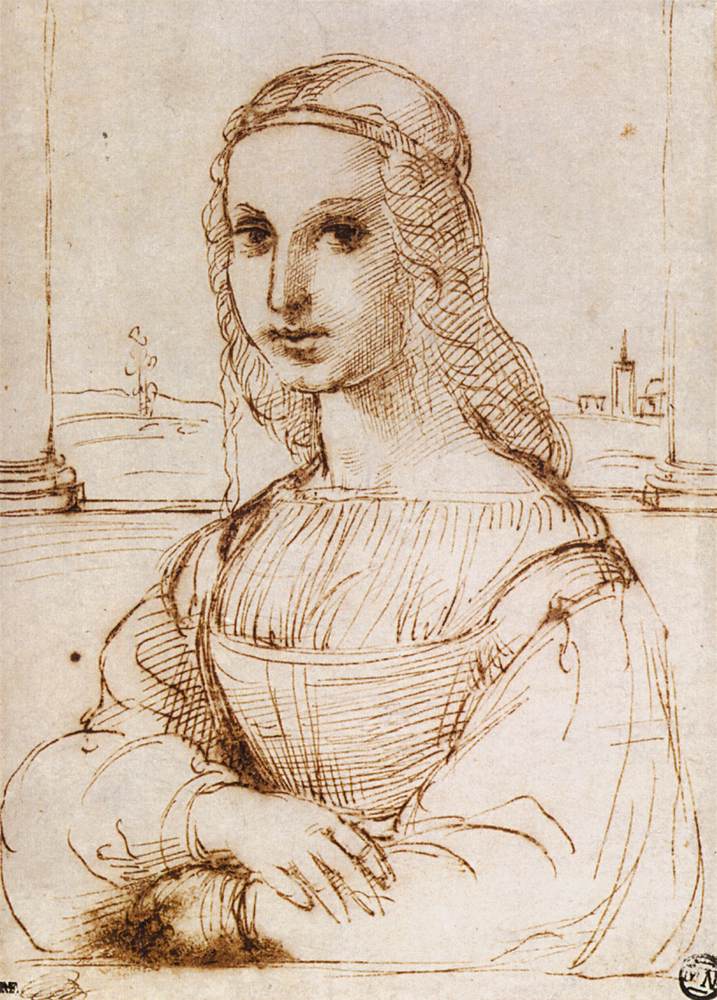
This sketch looked something like this and if you compare it with the Mona Lisa in Louvre, you can see a huge difference.
In this sketch by Raphael, you can see two columns behind the Mona Lisa. Here, the researchers believed that Raphael must have made his drawing based on the Mona Lisa painting. So, it was initially brushed off. However, this theory was disproved by a German art historian in 1993. Professor Pallanti, whom I had mentioned earlier, who had been researching the identity of the Mona Lisa for 25 years, confirmed that Raphael actually lived right in front of the Giocondo family in Florence.
So, does this mean that Raphael made an original painting on the same subject, with the same woman in the same pose? This seems quite unbelievable. Another answer to this question could be that another Mona Lisa painting exists which inspired Raphael to make this drawing. And this second Mona Lisa painting was revealed to the world in 1914.
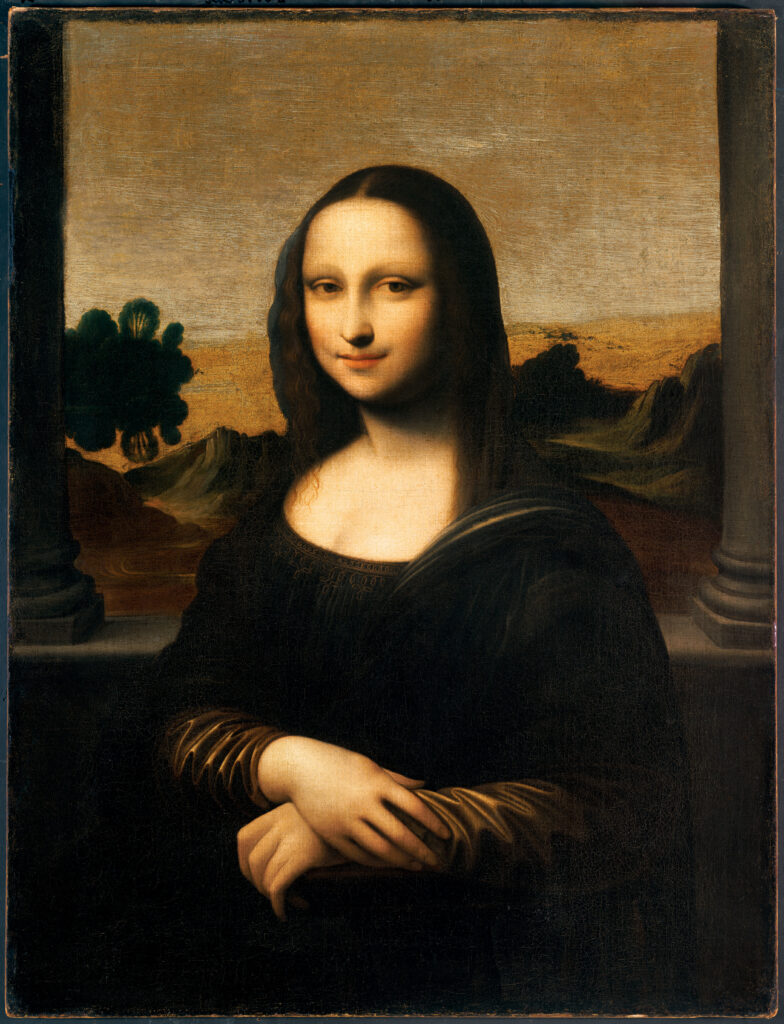
A novelist living near London, John R. Eyer, had a new version of the Mona Lisa. This is the new Mona Lisa painting. The same painting is based on which Raphael made his drawing. This second Mona Lisa is 3.5 inches longer and 5 inches wider than the one in the Louvre. If you compare these two paintings, you will notice three things.
First, the woman in this new Mona Lisa looks much younger. Second, the head in this new painting is tilted a little forward. And third, the expressions of this new Mona Lisa are very straightforward and clear. There is nothing mysterious about her smile that is in the Mona Lisa in the Louvre. The two columns in the background are the ones seen in Raphael’s drawing.
Due to these reasons, a new theory is coined by the experts. Leonardo da Vinci was actually working on two Mona Lisas. Leonardo da Vinci painted both these Mona Lisa. However, the Isleworth Mona Lisa that was later discovered was the first version of da Vinci’s painting. He was experimenting with his style then.
And this is why the Mona Lisa in that painting looks younger than the other Mona Lisa. This theory remains a topic of debate to date. In 2010, the Mona Lisa Foundation started an investigation on the Isleworth Mona Lisa to find out the secret behind it. And they came up with another theory. They said that the face and hands of this new Mona Lisa were indeed painted by da Vinci.
But the background was painted by an inferior artist. Perhaps, a person working in Leonardo’s workshop had finished this painting. Both these theories remain mere theories because no solid evidence has been found on either side. Coming back to the theft of the Mona Lisa, it was found that the mastermind of this theft, Vincenzo Peruggia, was an employee in the Louvre Museum.
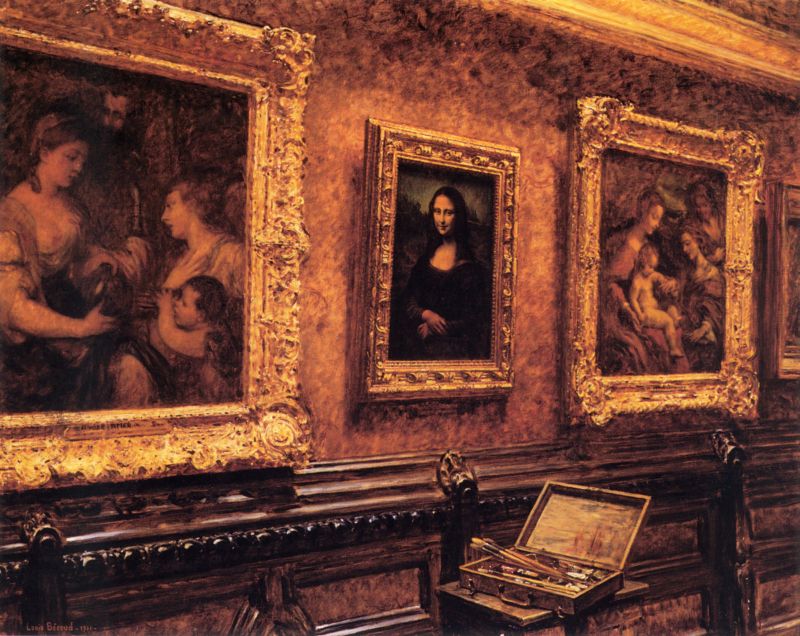
One day, he hid in some corner of the museum and spent the night there after which, the next morning, he walked out with the painting. He believed that since Leonardo da Vinci was an Italian, this painting should be in an Italian museum. When the news of the theft spread, it made headlines all over the world.

Scores of detectives were put to work to look for the thief. But no one could find him. For two years, Peruggia hid this painting at his home. He wondered what he could do with it. The whole world was looking for it. Finally, he became impatient and tried to sell the painting. He tried to sell this painting to an art dealer in Florence To Giovanni Poggi.
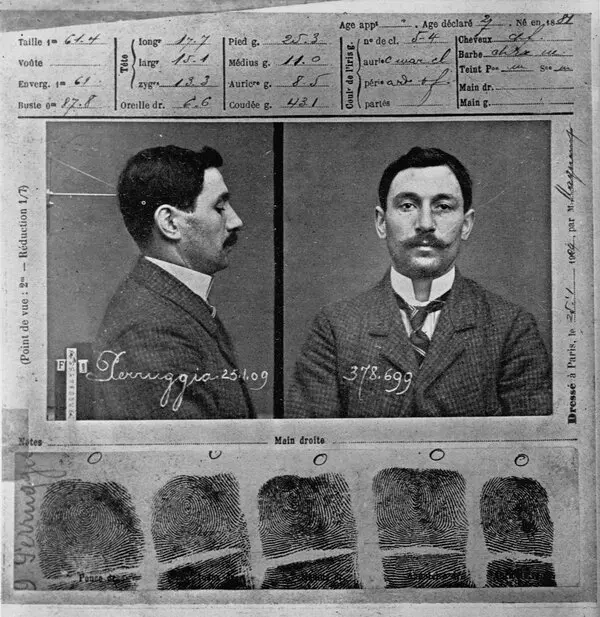
Giovanni became suspicious and saw the stamp on the painting to confirm that it was the stolen painting. He was being sold the most wanted item in the world. Because of this, Vincenzo was caught and was sentenced to 6 months’ imprisonment. The painting was sent back to the Louvre Museum and was hung up on 4th January 1914.
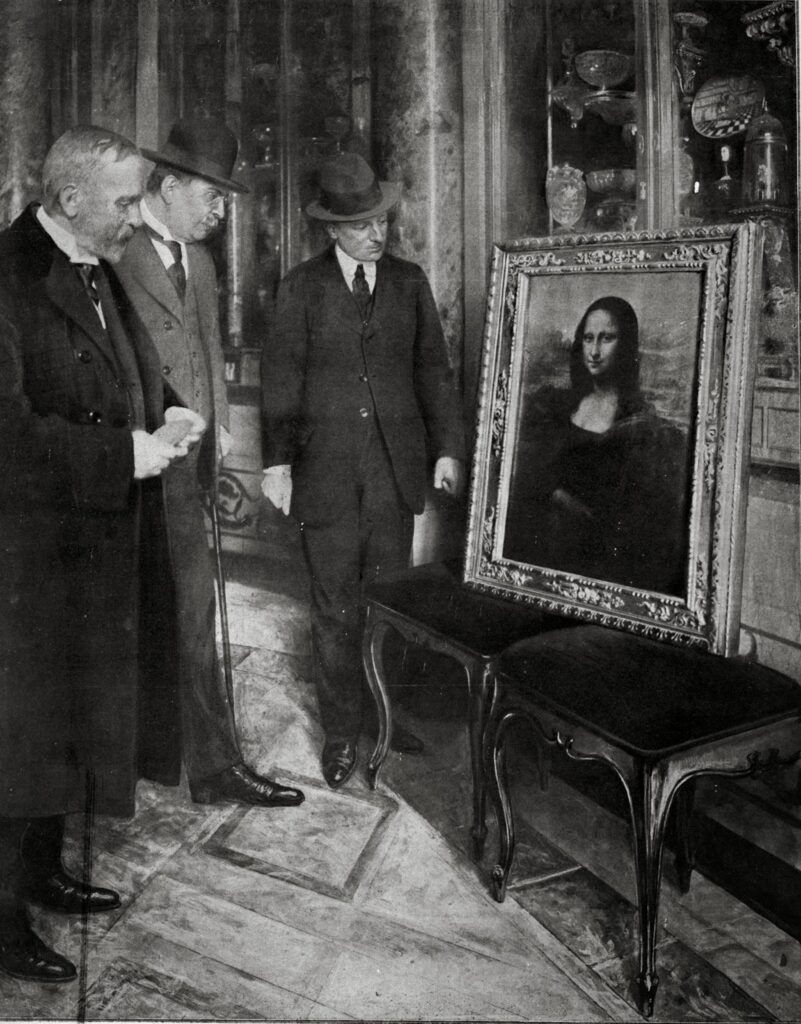

Today, this painting is displayed there, behind bulletproof glass, in strict climate-controlled conditions where humidity is maintained at 50% +/- 10%, and temperature is strictly maintained at 18°C to 21°C. Perhaps the most interesting part of this story is that only after this theft did Mona Lisa’s popularity start increasing.
And it became the world’s #1 famous painting. That’s right. Before the theft, the Mona Lisa was not very famous. People who were interested in art knew about the Mona Lisa but the common folks did not know about the Mona Lisa. So, if you go to the Louvre Museum and see the painting of the Mona Lisa and you see a crowd of people around it, then you can blame Vincenzo for this popularity.
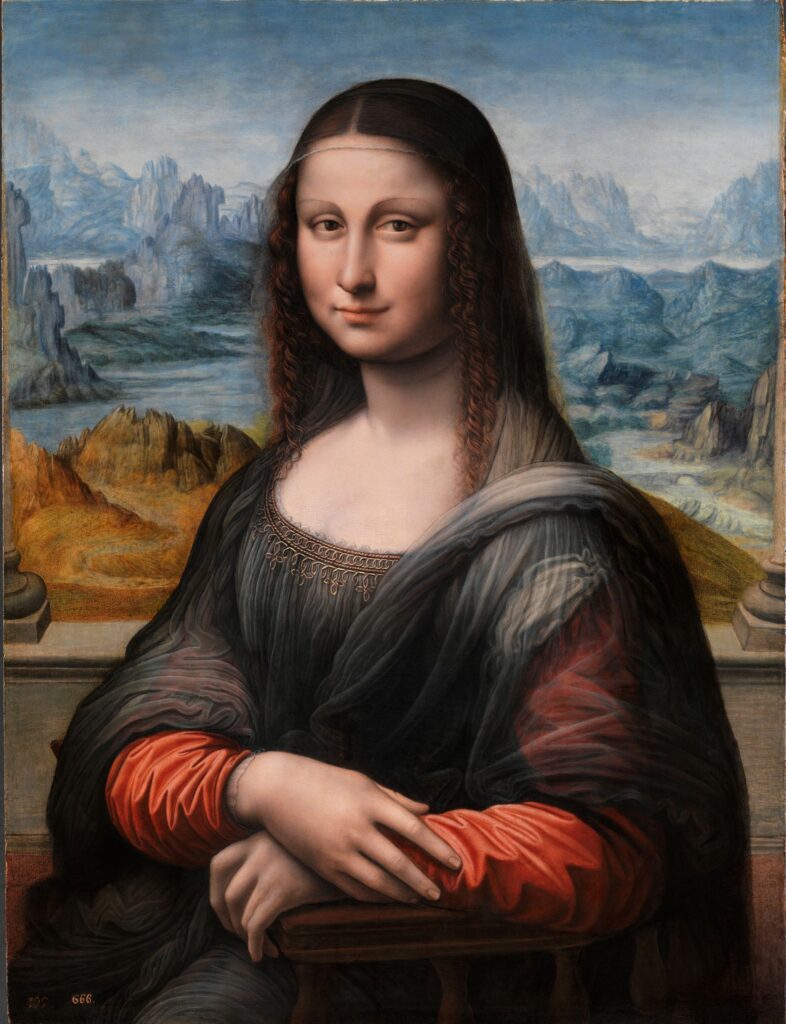
A rare compound detected in “Mona Lisa”
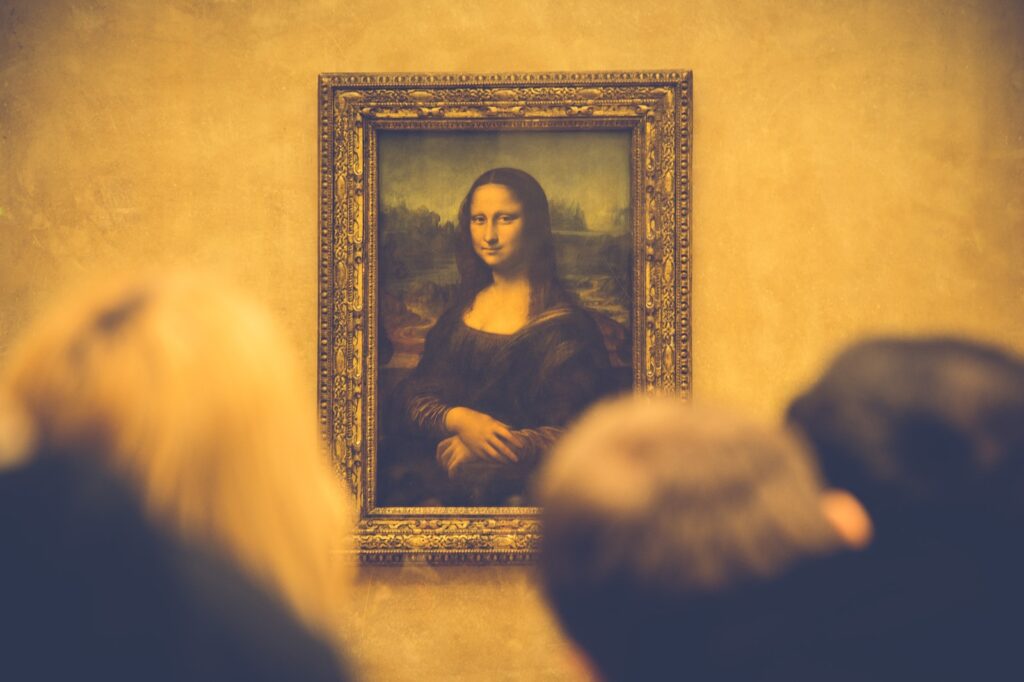
A recent study has unearthed a previously unknown secret hidden within the iconic masterpiece, the ‘Mona Lisa.’ Researchers have detected a rare compound within the painting, shedding new light on this enigmatic work of art.
How many times was the Mona Lisa stolen?
The Mona Lisa has been stolen only once in its history. The theft occurred on August 21, 1911, when the painting was taken from the Louvre Museum in Paris by an Italian handyman named Vincenzo Peruggia. Peruggia, who had previously worked at the museum, concealed the painting under his clothing and hid it in his apartment for more than two years. The painting was recovered in December 1913 when Peruggia attempted to sell it to an art dealer in Florence, Italy. After its return to the Louvre, the Mona Lisa has remained in the museum, securely displayed, and has not been stolen again.
The technique used in Monalisa
The technique used in the creation of the Mona Lisa is characterized by a method known as “sfumato.” This technique involves the delicate and gradual blending of colours and tones to create soft transitions between light and shadow. Leonardo da Vinci applied layers of thin glazes to achieve this effect, allowing for a seamless and almost imperceptible shift in colour and value. Sfumato gives the Mona Lisa its signature hazy and mysterious quality, particularly evident in the subject’s enigmatic smile and the soft contours of her face. This innovative approach to painting contributed to the Mona Lisa’s timeless allure and is a testament to Leonardo’s mastery as an artist.
What is sfumato
“Sfumato” is an Italian term that translates to “soft” or “smoky” in English. It is a painting technique used by artists, notably Leonardo da Vinci, to create a soft and hazy transition between colours and tones. In sfumato, the artist applies multiple thin layers of translucent paint, allowing the colours to subtly blend and merge into one another without clear, distinct lines or edges. This technique results in a seamless and almost imperceptible shift from light to shadow and from one colour to another. It gives the painted subject a three-dimensional, dreamy quality and is particularly evident in the soft, gradual transitions in Leonardo’s famous painting, the Mona Lisa, where it is used to create the subject’s enigmatic smile and the subtle contours of her face. Sfumato is known for its ability to create a sense of depth, realism, and mystery in works of art.
Facts About The Famous Painting “Mona Lisa,” Created by The Italian Artist Leonardo da Vinci:
- Title: The painting’s official title is “La Gioconda” in Italian, which means “The Joyful One,” but it’s commonly known as the “Mona Lisa.”
- Artist: Leonardo da Vinci painted the Mona Lisa between 1503 and 1506, although he continued working on it for several years.
- Size: The Mona Lisa is relatively small, measuring approximately 30 inches (77 cm) in height and 20.9 inches (53 cm) in width.
- Subject: The identity of the woman in the painting has been a subject of debate for centuries. Most art historians believe she is Lisa Gherardini, the wife of Florentine merchant Francesco del Giocondo.
- Technique: Leonardo used a special technique called sfumato, which involves blending colours and tones to create soft transitions between light and shadow. This technique gives the painting its characteristic mysterious and soft appearance.
- Location: The Mona Lisa is currently housed in the Louvre Museum in Paris, France, where it has been displayed since the French Revolution.
- Theft: In 1911, the Mona Lisa was stolen from the Louvre and was missing for over two years. It was recovered in 1913.
- Famous Smile: The Mona Lisa’s enigmatic smile is one of the most recognizable features of the painting. It has been the subject of much fascination and interpretation.
- Popularity: The Mona Lisa is one of the most famous and iconic works of art in the world. It attracts millions of visitors to the Louvre each year.
- Priceless: Due to its immense cultural and historical significance, the Mona Lisa is considered priceless, and it is not insured.
- Copy by Leonardo: There is another version of the Mona Lisa, known as the “Isleworth Mona Lisa,” which some experts believe to be an earlier or later copy created by Leonardo himself.
- Vandalism: The painting has been the target of vandalism several times. In 1956, a vandal threw acid at the painting, causing some damage to the lower part of the work.
- Artistic Influence: The Mona Lisa has had a profound influence on art, inspiring countless artists and even appearing in various forms in modern popular culture.
- Mystery: The Mona Lisa’s mystique extends to various aspects, including her identity, the landscape in the background, and the reason behind the painting’s creation.
- Scientific Study: The Mona Lisa has undergone extensive scientific analysis and examination, including infrared imaging and multispectral analysis, to uncover hidden details and insights into Leonardo’s creative process.
The Mona Lisa remains an enduring masterpiece that continues to captivate art enthusiasts and visitors from around the world.
Frequently Asked Questions (FAQs) about the Mona Lisa:
- Who is the subject of the Mona Lisa?
- The subject of the Mona Lisa is widely believed to be Lisa Gherardini, the wife of Florentine merchant Francesco del Giocondo. She is also known as Lisa del Giocondo, which is where the painting’s Italian title “La Gioconda” originates.
- Why is the Mona Lisa so famous?
- The Mona Lisa is famous for its artistic and historical significance. It’s considered one of the greatest masterpieces of art, known for its enigmatic smile, Leonardo da Vinci’s skilful technique, and its iconic status in popular culture.
- What is the Mona Lisa’s technique?
- The Mona Lisa was created using a technique called “sfumato,” which involves blending colours and tones to create soft transitions between light and shadow. This technique gives the painting its characteristic hazy and mysterious appearance.
- Where is the Mona Lisa displayed?
- The Mona Lisa is on display at the Louvre Museum in Paris, France, where it has been housed since the French Revolution.
- Has the Mona Lisa ever been stolen?
- Yes, the Mona Lisa was stolen once. It was taken from the Louvre in 1911 by Vincenzo Peruggia, an Italian handyman. The painting was recovered in 1913.
- Is the Mona Lisa insured?
- No, the Mona Lisa is considered priceless and is not insured due to its immense cultural and historical significance.
- What is the meaning of the Mona Lisa’s smile?
- The meaning of the Mona Lisa’s smile has been the subject of much debate and interpretation. It is often described as enigmatic, and the reason behind her smile remains a mystery.
- How has the Mona Lisa influenced art and culture?
- The Mona Lisa has had a profound influence on art, inspiring countless artists and appearing in various forms in modern popular culture, from literature to advertising.
- What is the size of the Mona Lisa?
- The Mona Lisa measures approximately 30 inches (77 cm) in height and 20.9 inches (53 cm) in width.
- Has the Mona Lisa ever been vandalized?
- Yes, the painting has been the target of vandalism. In 1956, a vandal threw acid at the Mona Lisa, causing some damage to the lower part of the work.
These frequently asked questions provide insight into the history and significance of the Mona Lisa, one of the most famous and iconic paintings in the world.
READ MORE:
- African Digital Art Prints Free Download | African Art images
 Spread the love
Spread the love - Boho Chic Wallpapers | Best Bohemian Wallpaper Ideas
 Spread the love
Spread the love - Boho Chic Wallpapers Free Download
 Spread the love Floral Wall Art prints: Boho Rainbow Digital Art Prints & Images: Kids Colouring Pages: Boho water colour…
Spread the love Floral Wall Art prints: Boho Rainbow Digital Art Prints & Images: Kids Colouring Pages: Boho water colour… - How to Earn Money by Doing Nothing
 Spread the love Introduction In today’s fast-paced world, the idea of earning money without exerting much effort sounds like a…
Spread the love Introduction In today’s fast-paced world, the idea of earning money without exerting much effort sounds like a… - How to Earn Money by Selling Digital Art on Etsy
 Spread the loveEtsy has emerged as a popular platform for artists and creators to showcase and sell their digital artwork…
Spread the loveEtsy has emerged as a popular platform for artists and creators to showcase and sell their digital artwork… - How to Earn Money by Selling Digital Art
 Discover the secrets to transforming pixels into profit, as we uncover the essential steps to success in the world of selling digital art.Learn How to Earn Money by Selling Digital Art.
Discover the secrets to transforming pixels into profit, as we uncover the essential steps to success in the world of selling digital art.Learn How to Earn Money by Selling Digital Art. - When first cricket match was played
 Kick-starting a Legacy: The Inception of Cricket
Kick-starting a Legacy: The Inception of Cricket - Largest spider ever discovered
 The Gigantic Arachnid: A Spider Spectacle
The Gigantic Arachnid: A Spider Spectacle - The largest octopus on earth ever found
 Discover the Gigantic Goliath Octopus: Earth’s Epic Eight-Armed Marvel
Discover the Gigantic Goliath Octopus: Earth’s Epic Eight-Armed Marvel - How did Leonardo da Vinci become famous?
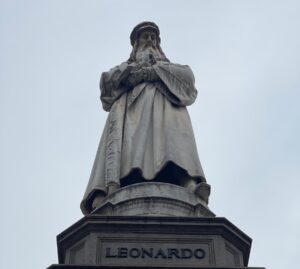 Unveiling Leo’s Luminary Journey: From Aspiring Artist to World’s Wonder!
Unveiling Leo’s Luminary Journey: From Aspiring Artist to World’s Wonder! - What is depicted in “The Last Supper”? ,
 Discover the enchanting world of Leonardo da Vinci’s masterpiece, “The Last Supper.” Unravel the secrets and hidden meanings of this captivating painting, exploring its symbolism and profound storytelling. Immerse yourself in its splendor and let the magic fill your heart and mind.
Discover the enchanting world of Leonardo da Vinci’s masterpiece, “The Last Supper.” Unravel the secrets and hidden meanings of this captivating painting, exploring its symbolism and profound storytelling. Immerse yourself in its splendor and let the magic fill your heart and mind. - What is the most interesting thing about Leonardo da Vinci?
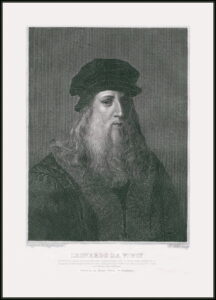 Unlocking the Enigma: Da Vinci’s Mystique
Unlocking the Enigma: Da Vinci’s Mystique - When was cricket started?
 From village greens to grand stadiums, cricket’s delightful journey began centuries ago!
From village greens to grand stadiums, cricket’s delightful journey began centuries ago! - How long did da Vinci work on the lips of the Mona Lisa?
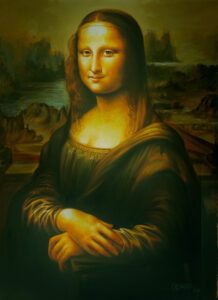 Unlocking the Enigmatic Smile: da Vinci’s Lip Legacy!
Unlocking the Enigmatic Smile: da Vinci’s Lip Legacy! - Who discovered prehistoric rock paintings?
 Unveiling the Ancient Art: The Pioneers of Prehistoric Rock Art!
Unveiling the Ancient Art: The Pioneers of Prehistoric Rock Art! - What was the most important subject of prehistoric paintings?
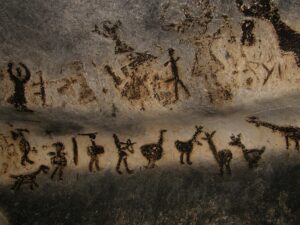 Unraveling the Artistic Enigma: What Engrossed Prehistoric Painters?
Unraveling the Artistic Enigma: What Engrossed Prehistoric Painters? - What was Leonardo da Vinci’s first painting?
 Unlocking the Canvas: Leonardo’s Artistic Odyssey!
Unlocking the Canvas: Leonardo’s Artistic Odyssey! - Where was Leonardo da Vinci born?
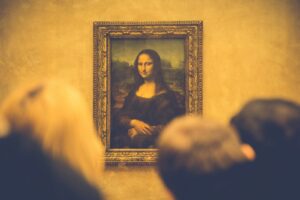 Step into the vivid world of artistry as we embark on a whimsical journey to discover the birthplace of the incomparable Leonardo da Vinci!
Step into the vivid world of artistry as we embark on a whimsical journey to discover the birthplace of the incomparable Leonardo da Vinci! - Tips and Tricks for Successful Planting of the Fernwood Snake Plant
 Fernwood Snake Plant: Unleash Your Green Thumb with this Delightful Darling!
Fernwood Snake Plant: Unleash Your Green Thumb with this Delightful Darling! - Has anyone tried to steal Monalisa?
 The Monalisa’s mischievous memento hunters: A merry chase for Leonardo’s lady! 🎨💃
The Monalisa’s mischievous memento hunters: A merry chase for Leonardo’s lady! 🎨💃 - Did Da Vinci go missing?
 Da Vinci’s Disappearing Act: The Mysterious Vanishing of a Creative Genius!
Da Vinci’s Disappearing Act: The Mysterious Vanishing of a Creative Genius! - Sugar Cane’s Sweet Voyage: A Sugary Surprise in the Middle East!
 Sugar Cane’s Sugary Surprise: Middle East’s Sweet Delight!
Sugar Cane’s Sugary Surprise: Middle East’s Sweet Delight! - Sugar Cane Showdown: Unveiling the Sweetest Superpower!
 Sugar Cane Showdown: Unveiling the Sweetest Superpower! Get ready to indulge in a sugary saga like never before as we dive into the whimsical world of sugar cane! Brace yourself for a toothsome adventure filled with delightful surprises and tantalizing tales. Prepare to be bewitched by the undeniable charm of this extraordinary superpower!
Sugar Cane Showdown: Unveiling the Sweetest Superpower! Get ready to indulge in a sugary saga like never before as we dive into the whimsical world of sugar cane! Brace yourself for a toothsome adventure filled with delightful surprises and tantalizing tales. Prepare to be bewitched by the undeniable charm of this extraordinary superpower! - Texas’ Tropical Treasures: Discover the 10 Dreamy Isles!Texas’ Tropical Treasures: Discover the 10 Dreamy Isles – Sun, Fun, and Paradise Await!
- How to Sell Art on Etsy: Tips and Tricks for Success
 Spread the loveLearn the best tips and tricks for success on Etsy as an artist. Discover how to sell your…
Spread the loveLearn the best tips and tricks for success on Etsy as an artist. Discover how to sell your… - Selling Digital Art On Etsy – Complete Guide
 Spread the loveAre you interested in selling digital art on Etsy? This complete guide will walk you through the process,…
Spread the loveAre you interested in selling digital art on Etsy? This complete guide will walk you through the process,… - The Top Attractions & Places to Visit on the Amalfi Coast
 Discover the Amalfi Coast’s enchanting gems: Positano’s pastel allure, Ravello’s heavenly gardens, and Amalfi’s historic charm!
Discover the Amalfi Coast’s enchanting gems: Positano’s pastel allure, Ravello’s heavenly gardens, and Amalfi’s historic charm! - Best Places to Visit in ItalyBuongiorno, wanderlust enthusiasts! Italy, a land brimming with enchantment, beckons you to embark on a journey like no other. From the grandeur of Rome to the romance of Venice, this vibrant nation boasts a tapestry of captivating destinations. So, grab your map, ignite your adventurous spirit, and let’s discover the 21 best places to visit in Italy!
- Kiwi Chronicles: Unraveling New Zealand’s Vibrant Past!
 Kiwi Chronicles: Unraveling New Zealand’s Vibrant Past! Rediscover the Land of the Long White Cloud through captivating tales and extraordinary adventures!
Kiwi Chronicles: Unraveling New Zealand’s Vibrant Past! Rediscover the Land of the Long White Cloud through captivating tales and extraordinary adventures! - Kiwi Tales to Cinematic Wonders: Unveiling New Zealand’s Timeless Fascination!
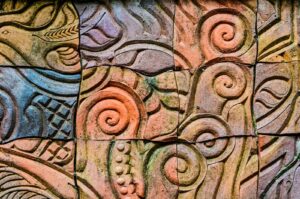 Unveiling New Zealand’s Timeless Fascination: From Kiwi Tales to Cinematic Wonders!
Unveiling New Zealand’s Timeless Fascination: From Kiwi Tales to Cinematic Wonders! - Story Of Friendship, “Threads of Time”
 Spread the loveOnce upon a time in the quiet town of Willowbrook, there existed an extraordinary friendship that transcended the…
Spread the loveOnce upon a time in the quiet town of Willowbrook, there existed an extraordinary friendship that transcended the… - Thrill Story “Shadows of Deception” #1
 “Embark on a heart-pounding journey with Detective Jack Turner as he unravels a web of deception in ‘Shadows of Deception.’ A mysterious package, cryptic messages, and a ticking bomb propel him into a race against time, leading to a chilling discovery that ties past victims and allies. Gripping dialogues and unexpected twists weave a tale of suspense, betrayal, and the relentless pursuit of truth. Will Detective Turner unmask the puppet master behind the shadows, or will the city succumb to a sinister plot? Dive into this riveting thriller for a rollercoaster of suspense and intrigue.”
“Embark on a heart-pounding journey with Detective Jack Turner as he unravels a web of deception in ‘Shadows of Deception.’ A mysterious package, cryptic messages, and a ticking bomb propel him into a race against time, leading to a chilling discovery that ties past victims and allies. Gripping dialogues and unexpected twists weave a tale of suspense, betrayal, and the relentless pursuit of truth. Will Detective Turner unmask the puppet master behind the shadows, or will the city succumb to a sinister plot? Dive into this riveting thriller for a rollercoaster of suspense and intrigue.” - FREE DOWNLOAD Elephant Digital Art | Elephant Painting, Decorative Elephant Art,
 Spread the love
Spread the love - FREE DOWNLOAD Pattern Digital Art
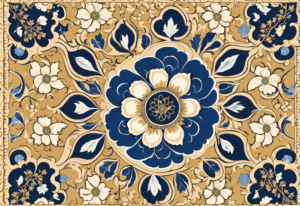 Spread the love
Spread the love - FREE DOWNLOAD Eagle Art Prints | Eagle Print, Indian Art, Indian Traditional Art, Eagle Wall Art, Eagle Art Print, Indian Living Room Gift, Eagle Art Poster
 FREE DOWNLOAD Eagle Art Prints | Eagle Print, Indian Art, Indian Traditional Art, Eagle Wall Art, Eagle Art Print, Indian Living Room Gift, Eagle Art Poster
FREE DOWNLOAD Eagle Art Prints | Eagle Print, Indian Art, Indian Traditional Art, Eagle Wall Art, Eagle Art Print, Indian Living Room Gift, Eagle Art Poster - FREE DOWNLOAD Deer Art Prints | Deer Print, Indian Art, Indian Traditional Art, Deer Wall Art, Deer Art Print, Indian Living Room Gift, Deer Art Poster
 FREE DOWNLOAD Deer Art Prints | Deer Print, Indian Art, Indian Traditional Art, Deer Wall Art, Deer Art Print, Indian Living Room Gift, Deer Art Poster
FREE DOWNLOAD Deer Art Prints | Deer Print, Indian Art, Indian Traditional Art, Deer Wall Art, Deer Art Print, Indian Living Room Gift, Deer Art Poster - Indian Folk Tree Art Print | Indian Pichawai Art, Indian Flower Wall Art, Flower Print, Indian Art Print, Traditional Indian Art, Living Room Decor
 Spread the love
Spread the love - DOWNLOAD FREE Parrot Digital Art Print | Parrot Print, Indian Art, Indian Traditional Art, Parrot Wall Art, Parrot Art Print, Indian Living Room Gift, Parrot Art Poster, Indian Parrot
 DOWNLOAD FREE Parrot Digital Art Print | Parrot Print, Indian Art, Indian Traditional Art, Parrot Wall Art, Parrot Art Print, Indian Living Room Gift, Parrot Art Poster, Indian Parrot
DOWNLOAD FREE Parrot Digital Art Print | Parrot Print, Indian Art, Indian Traditional Art, Parrot Wall Art, Parrot Art Print, Indian Living Room Gift, Parrot Art Poster, Indian Parrot - FREE Lotus Digital Art Prints DOWNLOAD | Lotus Digital Art Print, Indian Art, Indian Traditional Art, Lotus Wall Art, Lotus Art Print, Indian Living Room Gift, Lotus Art Poster FREE
 FREE Lotus Digital Art Prints DOWNLOAD | Lotus Digital Art Print, Indian Art, Indian Traditional Art, Lotus Wall Art, Lotus Art Print, Indian Living Room Gift, Lotus Art Poster FREE
FREE Lotus Digital Art Prints DOWNLOAD | Lotus Digital Art Print, Indian Art, Indian Traditional Art, Lotus Wall Art, Lotus Art Print, Indian Living Room Gift, Lotus Art Poster FREE - Maori Marvels: Mystical Tales From Aotearoa!
 Discover the enchanting myths and legends of the Maori people in New Zealand. From the creation of Aotearoa to the magical glowworm caves, immerse yourself in the rich tapestry of Maori culture and storytelling.
Discover the enchanting myths and legends of the Maori people in New Zealand. From the creation of Aotearoa to the magical glowworm caves, immerse yourself in the rich tapestry of Maori culture and storytelling. - FREE Tajmahal Digital Print | Indian Folk Art, Indian Vintage Art, Indian Vintage Wall Art, Indian Art, Mughal Art, Indian Living Room Gift, Indian Poster
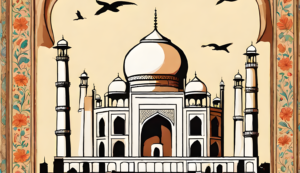 Spread the love
Spread the love - Planting Tips for Dwarf Snake Plants: Create a Green Oasis with the Charm of Sansevieria BallyiUnleash Your Green Thumb with Sansevieria Ballyi: The Ultimate Guide to Planting, Weather, Growth, Fertilizer & More! 🌱
- How to Prevent Muscle Imbalances and Back Pain in BodybuildingDiscover the secrets behind bodybuilding mistakes that lead to back pain and skipped gym sessions. Learn how to avoid muscle imbalances and stay injury-free.
- What is Leonardo da Vinci’s technique?Leonardo da Vinci’s Technique: Unveiling the Master’s Creative Wizardry!
- FREE Lord Ganesha Art Prints | Indian Folk Art, Indian Traditional Art FREE Lord Ganesha Art Prints, Indian Art, Indian Living Room Gift, Indian Poster
 Spread the loveIf you’re looking for Lord Ganesha art prints, there are several places where you can find them. Here…
Spread the loveIf you’re looking for Lord Ganesha art prints, there are several places where you can find them. Here… - 7 Simple Tips to Help You Achieve Your Weight Loss ResolutionsSpread the love It’s that time of year again – the time for setting new goals and resolutions. But let’s…
- Was Leonardo da Vinci an aristocrat?
 Unveiling Leonardo’s Noble Roots: A Renaissance Riddle
Unveiling Leonardo’s Noble Roots: A Renaissance Riddle - Your 7-Day Self-Improvement Program Makes You “A Better You”Spread the love In a world where celebrity marriages seem to crumble at an alarming rate, it’s easy to become…
- Indian Art Prints FREE | Download Premium Indian Art Print For FREE & Give Your Home a Stunning Look
 Download Indian Art Print For FREE. Transform your living space with the allure of Premium Indian Art Prints, available for free download. These captivating artworks encompass the rich cultural heritage of India, offering an opportunity to infuse your home with elegance and visual splendor.
Download Indian Art Print For FREE. Transform your living space with the allure of Premium Indian Art Prints, available for free download. These captivating artworks encompass the rich cultural heritage of India, offering an opportunity to infuse your home with elegance and visual splendor. - “Dholavira Excavation Illuminates the Harappan Civilization”Spread the loveDholavira excavation throws light on the Harappan civilization New Delhi, June 24: If the discovery of Mohenjodaro and…


